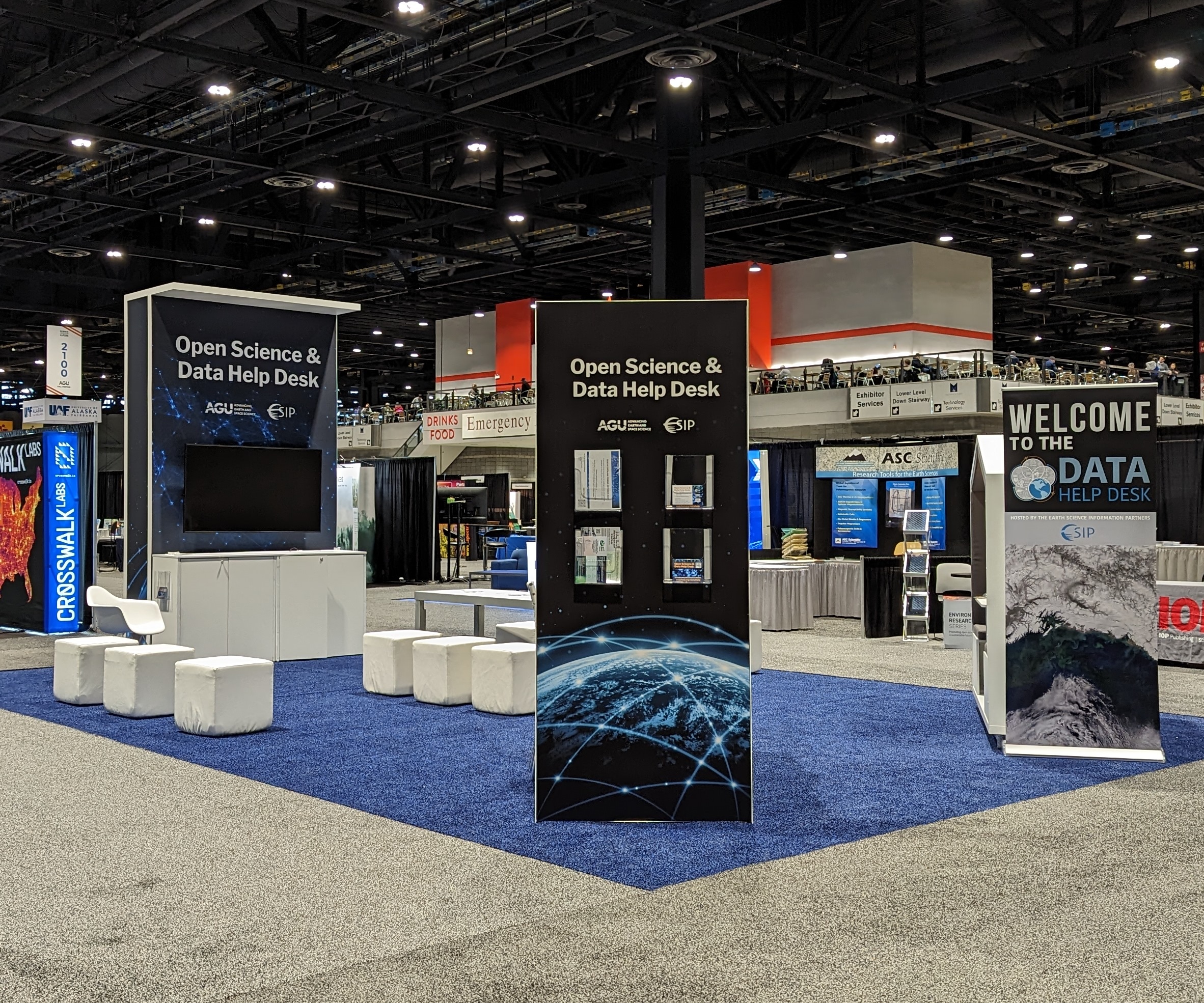Location & Infrastructure
Locations for a Data Help Desk
Table for a booth format
- For in-person data help desks, a physical presence like a table or booth in a high-traffic area is essential. The Exhibit Hall of a conference is often a beneficial location for high visibility. The AMS booth (booth 523) was used for the in-person Data Help Desk at #AMS2023. Similarly, at AGU 2024, the Data Help Desk was hosted within the Open Science Pavilion within the Exhibit Hall.
- This dedicated space allows users to easily approach and interact with the help desk staff to ask questions. Volunteers staffing the Data Help Desk booth can directly engage with attendees.
- The workstation area might also need to accommodate monitors for displaying demos of tools and resources on-demand.

Open space format
- While the immediate help desk interaction might occur at a table, a conference center or meeting room can be necessary for hosting more formal sessions like training sessions, workshops, or talks by experts. These sessions can provide more in-depth learning opportunities on specific data management topics.
- The Data FAIR often includes workshops and town halls in addition to the Data Help Desk booth. The Open Science & Data Help Desk at AGU 2024 featured a daily ‘featured demonstration hour’.
- These spaces allow for demos of tools and resources to a larger audience.

Infrastructure for a Data Help Desk
Computers
Laptops or desktops are necessary for data help desk staff. They allow staff to:
- Access online resources, demonstrate tools, and potentially record questions or feedback. They also allow monitoring of communication channels, answering questions, and managing online resources.
- Access online resources and documentation to answer user questions. This includes links to data repositories, FAIR principles information, data management planning tools, and software documentation.
- Communicate with users via platforms like X (formerly Twitter), Slack, email, or meeting platforms.
- Host and access the gallery of resources, which often includes videos on YouTube and documents on platforms like Figshare.
- Demonstrate online tools and resources to users.
Software
- The data help desk aims to help researchers learn skills and techniques for better research and making data and software open and FAIR. To do this effectively, staff and volunteers should be familiar with a range of software relevant to data management and analysis. General data topics like Programming, Data Visualization, Data Analysis, and specific user questions are needs related to software like Python, Matplotlib.
- Staff might utilize social media management tools like Tweetdeck, scheduling software and managing posts on Slack.
- The use of a Slack channel (#datahelpdesk-experts) is recommended for backchannel conversation amongst experts and for those less comfortable with public platforms like X (formerly Twitter) to provide input. This suggests the need for staff to have access to and be familiar with such communication platforms.